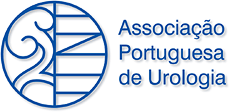Gemcitabine as a Therapeutic Alternative during Shortage of BCG: The CHLC (Hospital S. José) Experience
DOI:
https://doi.org/10.24915/aup.36.1-2.90Keywords:
BCG Vaccine, Gemcitabine/therapeutic use, Mitomycin/ therapeutic use, Treatment Outcome, Urinary Bladder Neoplasms/drug therapyAbstract
Introduction: The non-muscle invasive bladder tumors should be stratified into risk groups so the adjuvant treatment after surgery can be suited to each patient. The high risk tumors should be treated with one to three-year maintenance intravesical bacillus Calmette-Guérin (BCG). It has been reported shortages of intravesical BCG and our hospital center was affected in 2014/2015, leading to a treatment change of the patients who had indication to BCG. Gemcitabine could be a valid alternative because some studies show it may have a role in intermediate-risk patients, as an alternative to mitomycin C, and in high risk, BCG-refractory patients, with a better toxicity profile.
Material and Methods: This is a descriptive, retrospective study that included patients with non-muscle invasive bladder tumors of high risk with onset of disease in 2013/2014, affected by the BCG shortage period at the Hospital Center.
Results: At CHLC, 11 high-risk patients were treated with gemcitabine, only two exclusively, and the others sequentially with BCG. Only two patients, treated with both gemcitabine and BCG, had tumoral recurrence. However, a significant number (6 out of 11) had adverse events, two of whom had to stop treatment.
Conclusion: Apparently, gemcitabine seems to be a good adjuvant treatment choice during the shortage of the gold standard treatment, due to the low number of recurrence, although adverse events reported were high.
Downloads
References
non-muscle-invasive-bladder-cancer/
2. Antoni S, Ferlay J, Soerjomataram I, Znaor A, Jemal A, Bray F. Bladder cancer incidence and mortality: a global overview and recent trends. Eur Urol. 2017;71:96-108. doi: 10.1016/j.eururo.2016.06.010.
3. Patton SE, Hall MC, Ozen H. Bladder cancer. Curr Opin Oncol. 2002; 14:265–72.
4. Addeo R, Caraglia M, Bellini S, Abbruzzese A, Vincenzi B, Montella L, et al. Randomized phase III trial on gemcitabine versus mytomicin in recurrent superficial bladder cancer: evaluation of efficacy and tolerance. J
Clin Oncol. 2010; 28:543–8. doi: 10.1200/JCO.2008.20.8199.
5. Goldberg H. ESOU18: Socio-economic Impact of BCG Shortage. [consultado Março 2019] Disponível em: https://www.urotoday.com/conference-highlights/esou18/esou18-bladder-cancer/101594-esou18-socio-economic-impact-of-bcg-shortage.html
6. Messing E. The BCG Shortage. Bladder Cancer. 2017; 3: 227–8. doi: 10.3233/BLC-179018.
7. Jones G, Cleves A, Wilt TJ, Mason M, Kynaston HG, Shelley M. Intravesical gemcitabine for non-muscle invasive bladder cancer. Cochrane Database Syst Rev. 2012;1:CD009294. doi: 10.1002/14651858.CD009294.pub2.
8. Martin JW, Carballido EM, Ahmed A, Farhan B, Dutta R, Smith C, et al. Squamous cell carcinoma of the urinary bladder: Systematic review of clinical characteristics and therapeutic approaches. Arab J Urol. 2016; 14: 183–91. doi: 10.1016/j.aju.2016.07.001.
9. Prasanna T, Craft P, Balasingam G, Haxhimolla H, Pranavan G. Intravesical gemcitabine versus intravesical bacillus camette-guérin for the treatment of non-muscle invasive bladder cancer: an evaluation of efficacy
and toxicity. Front Oncol. 2017;7:260. doi: 10.3389/fonc.2017.00260.
10. Gontero P, Casetta G, Maso G, Sogni F, Pretti G, Zitella A, et al. Phase II study to investigate the ablative efficacy of intravesical administration of gemcitabine in intermediate-risk superficial bladder cancer (SBC). Eur
Urol. 2004; 46:339 – 43. doi: 10.1016/j.eururo.2004.05.001.
11. Serretta V, Galuffo A, Pavone C, Allegro R, Pavone-MacAluso M. Gemcitabine in intravesical treatment of Ta-T1 transitional cell carcinoma of bladder: Phase I-II study on marker lesions. Urology. 2005; 65:65 – 9. doi: 10.1016/j.urology.2004.08.027.
12. De Berardinis E, Antonini G, Autran Gomez AM, di Silverio F. Intravesical administration of Gemcitabine for the chemoresection of superficial bladder cancer ‘a marker lesion study’. Eur Urol Suppl. 2004;3:123.
13. Calais da Silva FM, Calais da Silva FE. Phase 2 study 2000 mg of intravesical gemcitabine in marker lesions. Eur Urol Suppl. 2005;4:222.




